
Since 1698, when San Roque fraternity was created, there has been plenty of time so that Vilagarcían festivities could achieve the well-deserved consideration of being of “national touristic interest”. The well-known “fiesta del agua” – water festival- , the “combate naval”, a pyrotechnic display that has existed for over 150 years, the gastronomy fairs, aiming to promote local products such as clams, “revenidas”, recently fished sardines, or mushrooms but also some popular festivals like Carnivals, the “maios” – ornamental compositions decorated with flowers- the “night of the witches” or the more and more popular 12-grape tradition, taking place on the stroke of midday on the 31st of December instead of at midnight to ring in the New Year, completes the fun-filled list of festivals that is difficult to beat.

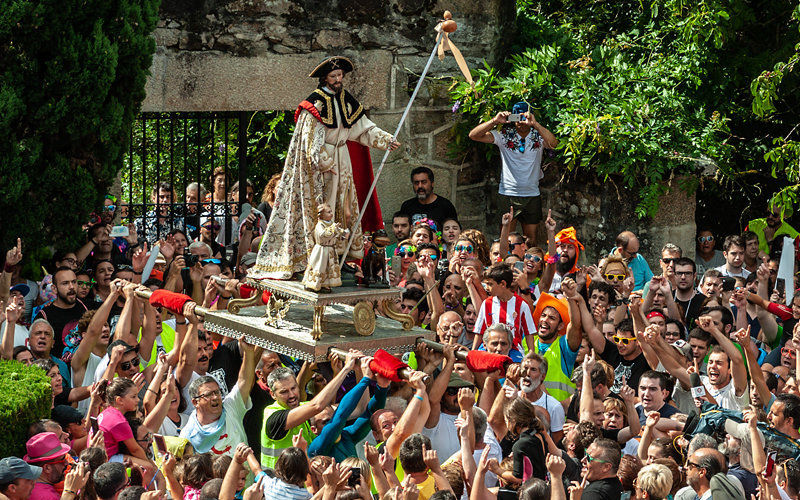
The patron saint of Vilagarcía’s main festival, which has been declared of national tourist interest, is celebrated for 10 days around the 16th of August, San Roque.
On this day, two special celebrations take place. One of them, of a religious nature, consists of the procession of the saint from the parochial church to the San Roque chapel. Thousands of faithful devotees accompany the saint of Montpellier on his journey, all of this takes place to the sound of the pasodoble “Triunfo”.
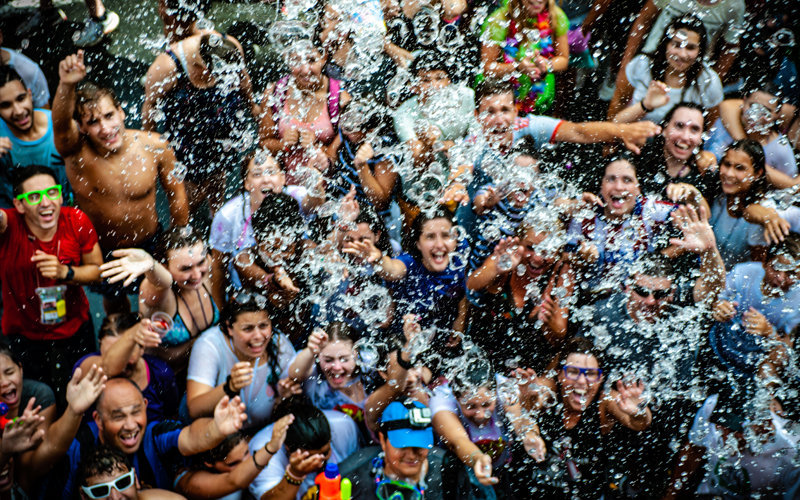
In the afternoon, when the saint has made his journey , another more festive event commences, the water festival. Thousands of kids, youngsters and those young of heart, run through the streets to the shouts of “water” or “aqui no llega” with the idea that they need water and it has not quite arrive yet, as they invite their neighbours, on the balconies to quench their thrist with some water. In turn, they are answered with buckets, hoses and bottles … or whatever people can get their hands on. If this does not suffice, the Vilagarcian firemen and civil protection squads use their fire trucks and hoses to soak the revellers until the early afternoon.
The water festival, with more than 30,000 participants, has not only received national but also international recognition as it figures in various websites that recommend the best festivals in Spain. So much so that UNESCO in its International Day of Water has recognized the Vilagarcían festival tradition.
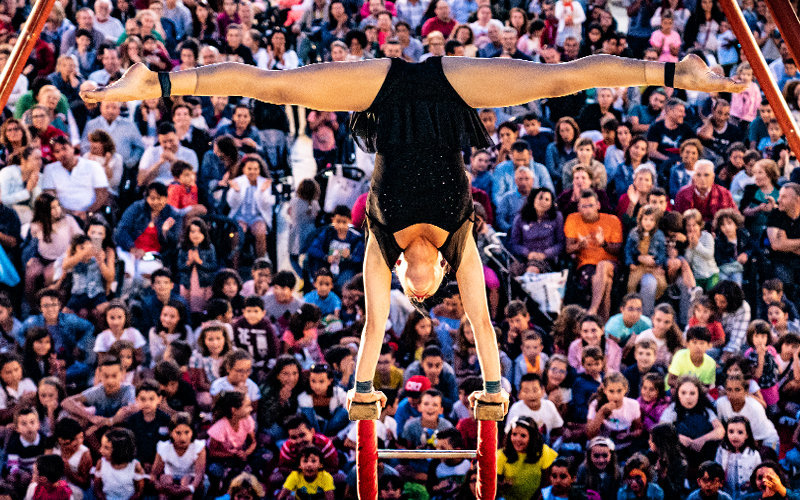
However, San Roque is more than the Water Festival. Festiclown, a one-week street festival which presents some of the best internationally recognized clown shows. Similarly, the Week of the Cinema, free concerts and numerous fun-filled activities for all ages.

The festival ends up with the Combate Naval, a pyrotechnic display that has existed for more than 150 years, which recalls the assault to the Peruvian port of El Callao in 1866. Coinciding with San Roque festivities, Carril’s Clam Festival and Revenidas Festival combine the traditional roasted sardines with live concerts. The Patron’s festivities end up with the Night of the Witches on the last Saturday of August.
Santa Rita’s celebrations are to honour the Italian saint, whose image is venerated at the Vistalegre convent, on the 22nd of May (local holiday). The celebration is the starting point for a marathon of fun-filled festivals, which the town hosts through to September.
Santa Rita de Casia is much venerated by Vilagarcíans and their O Salnés neighbours who ask the “Patron saint of the impossible” to help them resolve their problems. The celebrations have a deeply religious nature: from very early in the morning and through the day, hundreds of devotees attend the crowded masses that take place in the church. In the evening, a teeming procession goes along the main streets of the town. A Celt market around the convent, live concerts and open-air dances complete the program of activities.
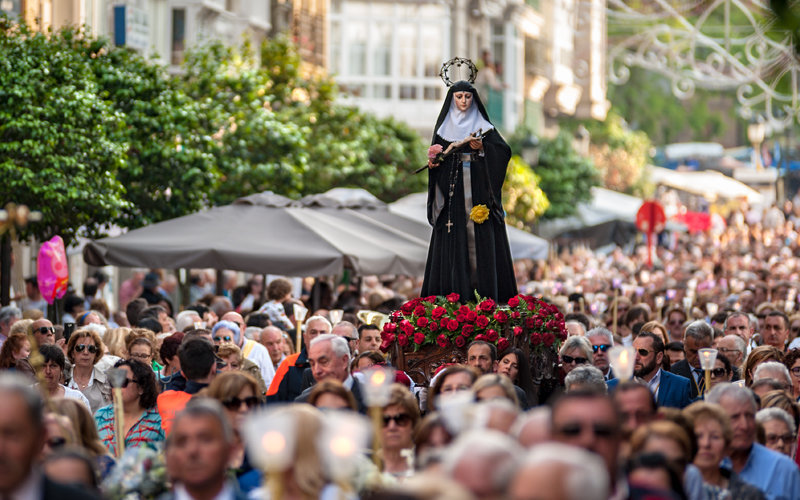
In the seafaring town of Carril, the month of July is the festival month par excellance. Our Lady of the Carmen (16th July), El Apóstol (25th July) and San Fidel (the Sunday after El Apóstol) are the three principle dates, although they celebrate also San Roque (16th August).
The ancient “sword dance” during the El Apóstol, and the “giants and bigheads” parades are two of the distinct symbols of the town.
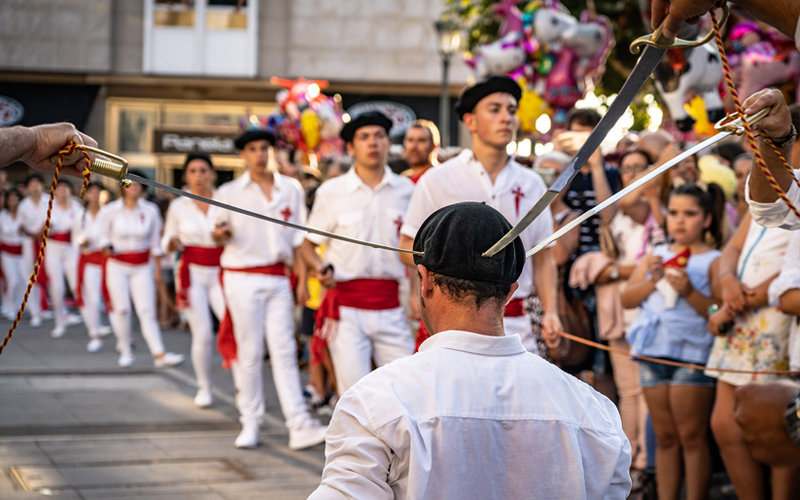
Vilaxoán celebrates the Saturday and Sunday after the El Carmen festival, (16th of July). Whenever possible, the sea procession is one of the most attactive acts. The celebrations include a festival song called “Vilaxoán canta”, an event that brings Vilaxoán people together as one massive choir.
The second festival of Vilaxóan takes place after the end of summer, it honours the Our Lady of del Rosario, which gives its name to the town’s fisherman association. The festivities take place on the first Sunday of October putting an end to the summer festivals in Vilagarcía.
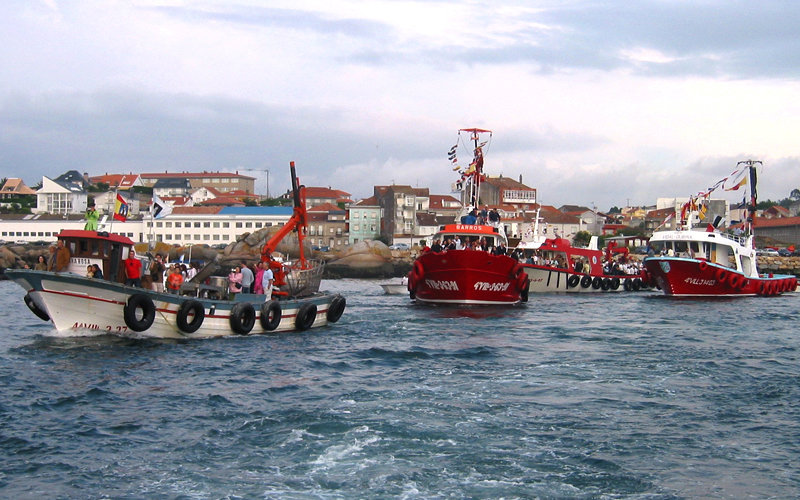
Enjoying the fine cuisine cooked with the first class produce from the O Salnés land and fish and seafood from the Arousa sea, is the main aim of those whoorganize the diverse gastronomic festivals that take place in the comarca or area. In Vilagarcía they celebrate four festivals, each one distinct but complementary nonetheless.
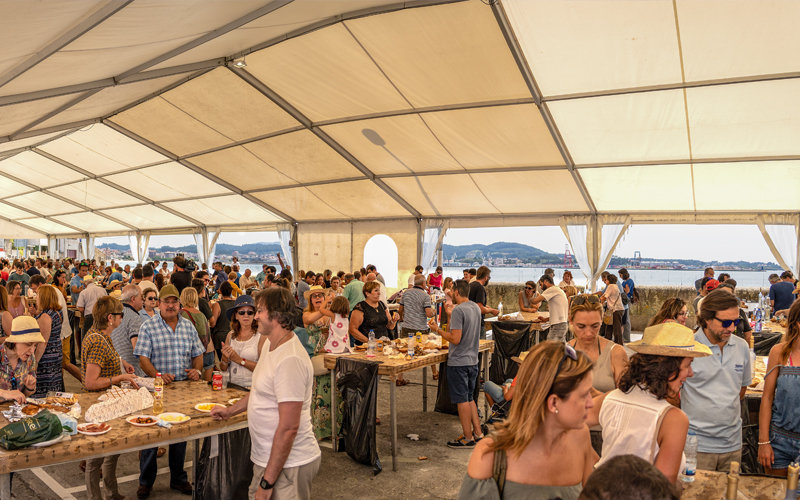
SECOND FORTNIGHT Of AUGUST
Carril most identifiable bivalbe is the protagonist of this food festival, which takes place the second fortnight of August. It is organized by the Cofradía de Pescadores – the fishermen’s association- and the Agrupación de Parquistas, made up of those who exploit the clam farms.
This festival declarated of Galician tourist interst in 2014, includes its own public announcement a food associations parade and fun-filled activities among which it stands out the popular cooking competition of dishes whose main ingredient must be the clams provided by the organizacion.
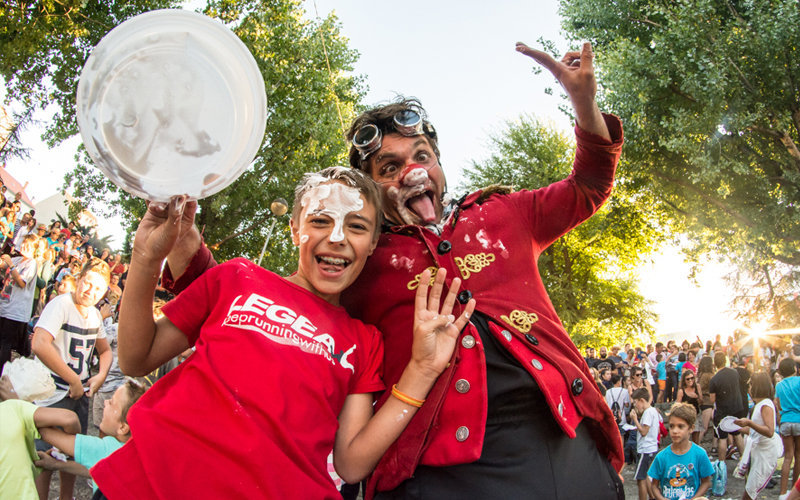
SECOND FORTNIGHT OF AUGUST
Vilaxoán has a great sailing and fishing tradition. Which brings us to this festival, where the revenidas, – recently fished sardines , which have been left in salted water for several hours, – are roasted and then normally eaten with corn bread and Albariño.
All this takes place in Doña Concha park, in the shade and in front of the sea. The fiesta is completed with a music festival which makes a clear commitment to Galician bands although also accompanied by some other national and international bands. A camping area next to O Preguntoiro beach, a solidarity circus festival, cooking shows, and an craftmanship fair constitute, alongside food tasting, the remarkable list of activities aimed at all kinds of people.
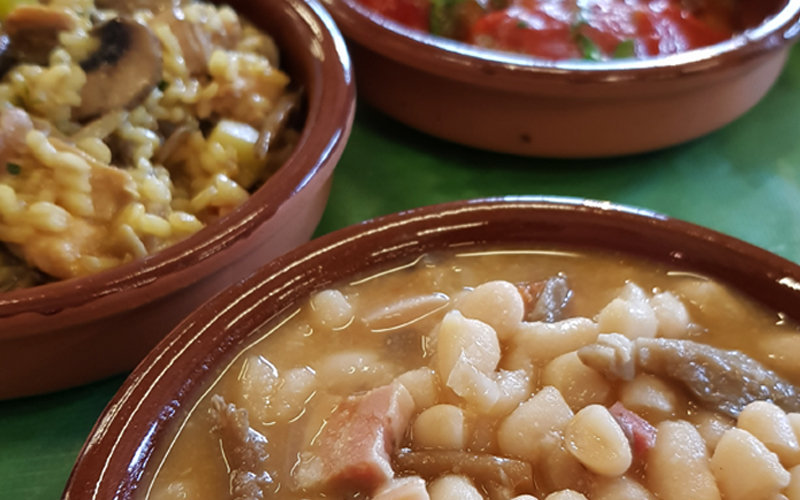
SECOND FORTNIGHT OF NOVEMBER
Organized by the A Cantarela Mycological Association, this is an excellent opportunity to get to to know mushrooms, a product that is not widely used in Galicia in spite of the mycological richness of our forests.
It takes place in the second fortnight of November in two different places: the Plaza de la Pescadería and the Casa da Culture or Auditorium. Exhibitions, conferences , a culinary competition and mycological tours are some of the activities that are completed with the tasting of affortable dishes whose main ingredients are mushrooms. It is held the second Sunday of November.
In addition to Vilagarcía, Carril and Vilaxoán’s festivals and gastronomic events, there are four more popular festivals, which also enjoy massive participation. Three of which belong to a long Galician tradition – Carnival, “Maios” and “Noite das Meigas”– and another one –“ las uvas” or the grapes of the 31stof December – which is fast becoming a new tradition.
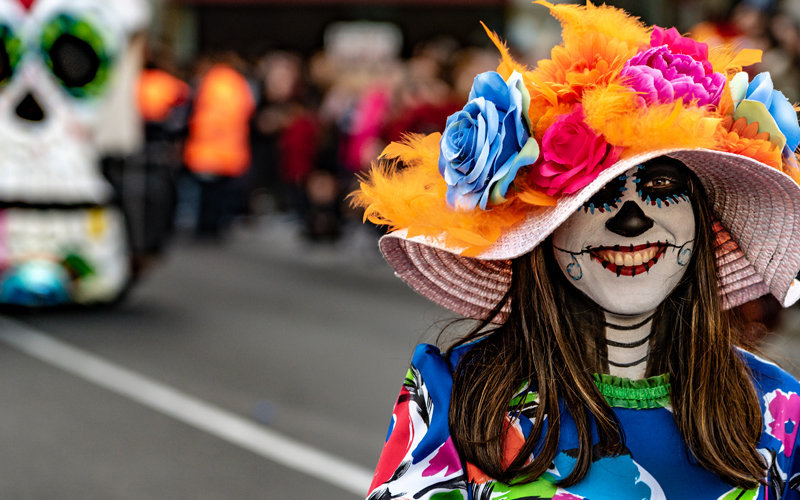
Carnival, a celebration deeply rooted in the Catholic world, offers for a few hours the opportunity to break free from the rules of normal order and throw caution to the wind. Although it is becoming custom to see some elaborate and carefully prepared fancy dresses, some old clothes and a bit of imagination is all you need to get into the swing of the party, and become a “choqueiro”. Carnival finishes with the popular “entierro de la sardina” – sardine’s burial-, which announces the beginning of the new phase of the year.
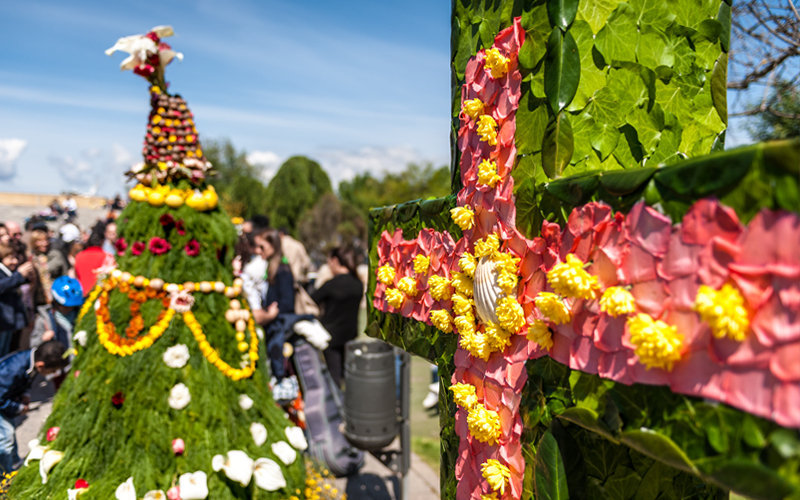
May’s Festival takes place the fist day of the flowers month. The festivities retrieve a Galician tradition, consisting of an exhibition of the best maios, – ornamental compositions made basically from flowers, grass, ferns, fruits and eggs – and of some lyrical poems created and sung for that event. It normally takes place in Miguel Hernández Park, if the weather is fine, otherwise it is held in the Plaza de la Pescadería.
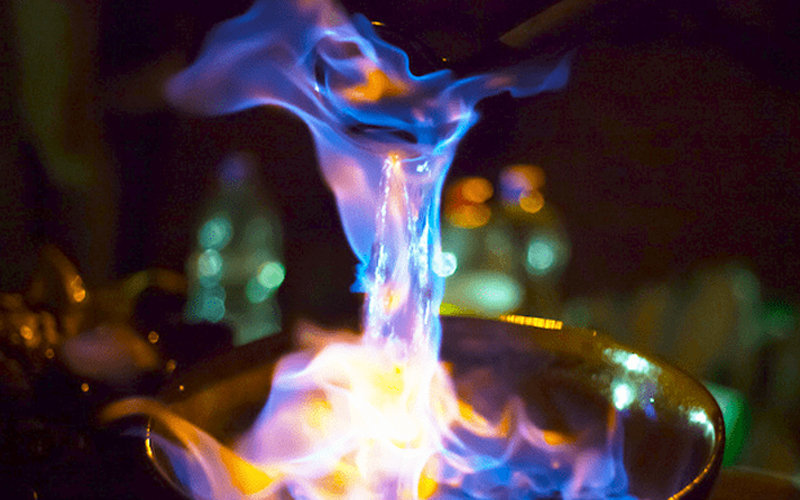
This festival is a farewell to the summer. When night falls on the last weekend of August, the city centre main streets come to life with lots of people following the music and theatres performed in the streets, after which people try to find a place where they can have queimada – homemade spirit- for free, to help comfort their spirits.
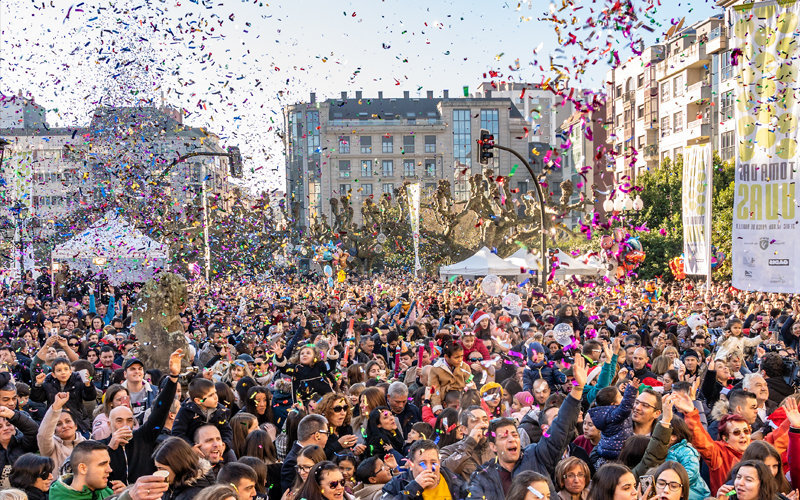
The Vilagarcíans, who wish to ring in the New Year, gather together in Plaza de Ravella to celebrate the farewell to the year. The grapes, which are given out for free, as well as the cava, garlands and confetti, are tasted with the sound of the Town Council’s bells. Although not at 12 midnight but 12 midday.